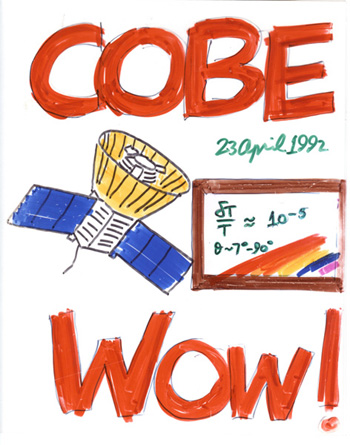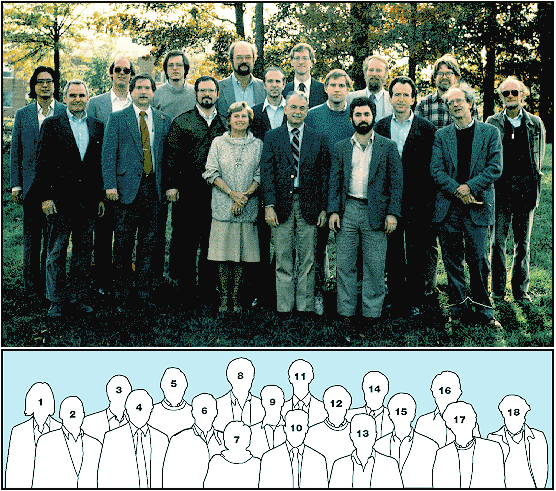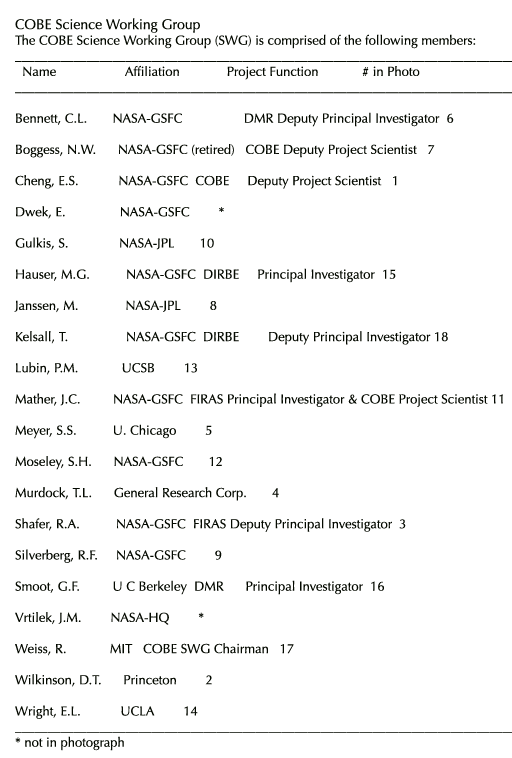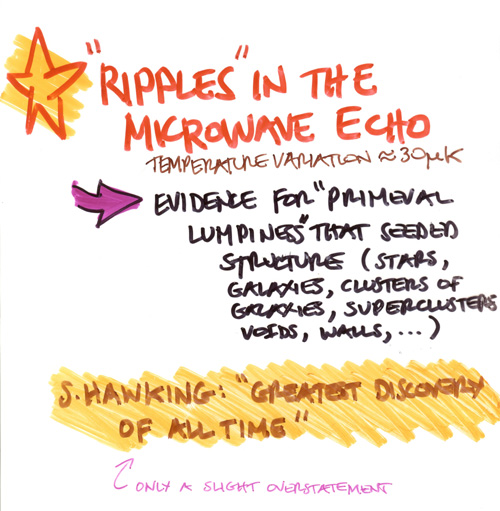 |
||
| COBE History/Time Line | ||
1974 July - NASA publishes Announcement of flight Opportunity (AO) # 6 & 7 1974 November - 175 + 1 (EUVE from Stu Boyer) proposals received 1975 February through September - peer group reviews 1976 Formation of Studies: This remains the core of scientists until the mid-1980 though various members of each of the charter six contribute at various low levels during the early years. The primary effort during this period for the DMR was the recruiting and training of engineers and technicians and the development of prototypes of the receiver and test hardware. Prototypes were built, tested, and in a couple of occasions used in scientific flights/observations at Berkeley during this period. Some calibration and test hardware was built by technicians (and engineers) at Goddard as training and preparation for the actual beginning of satellite work. 1982 A revision for cooling the DMR for increased sensitivity is developed and then sent through committees starting with the science team, the Goddard engineering division, the Goddard Management, and finally to NASA HQ. 1982 July NASA HeadQuarters approves a formal start of COBE The DMR GSFC team was slowly augmented from the core trained group of part-time 2 engineers and three technicians. The early interaction and working together experience and the training of a core as well as production of documentation made adding technical staff smoother and more straightforward than otherwise. It was still difficult. The main role of the PI (George Smoot) was training and inspiring the technical staff to be excited and interested in doing an excellent and timely job. Many of the new engineers were fresh, new hires with no real space or other experience but with enthusiasm and willingness to work hard and take responsibility. Beginning mid 1980 (1984/5) additional scientists were added to the team usually first in practice and then formally (until a year before launch when things were fully frozen). These included: Ed Cheng, Ned Wright, Chuck Bennett, Phil Lubin, Stephan Meyer, Rick Shafer, and the people such as Bob Silverberg, Tom Kelsall, Mike Janssen who were in the background and occasionally working on COBE in the early times. These were all people working with one of the charter six scientists. A number of scientists, e.g. Alan Kogut, Gary Hinshaw, Tony Banday, Kris Gorski, joined the effort working on the software and data processing and analysis. If they came on after 1988, they were never officially made part of the science working group. This caused some friction in later years. 1989 November Launch to orbit 1990 January - first impressive spectral results announced 1992 April 23 - public announcement of the discovery of CMB Anisotropy Structure in the COBE differential microwave radiometer first-year maps. Smoot, et al. Initial publication showing COBE results. PDF file
More spontaneous graphics about the discovery:
|
||
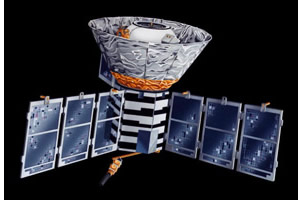 Many people had the idea of getting above the atmosphere, into space, for astronomical observations and specifically CMB observations. We were waiting for a good opportunity.
Many people had the idea of getting above the atmosphere, into space, for astronomical observations and specifically CMB observations. We were waiting for a good opportunity.
